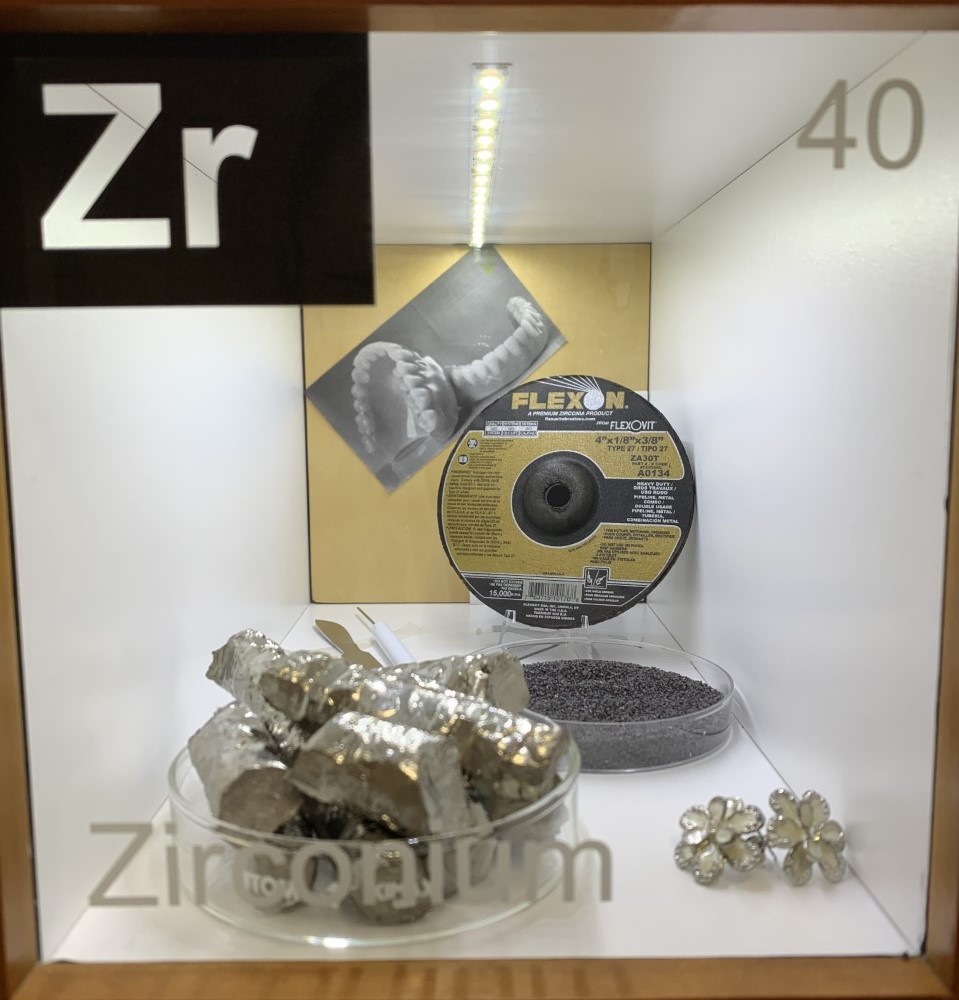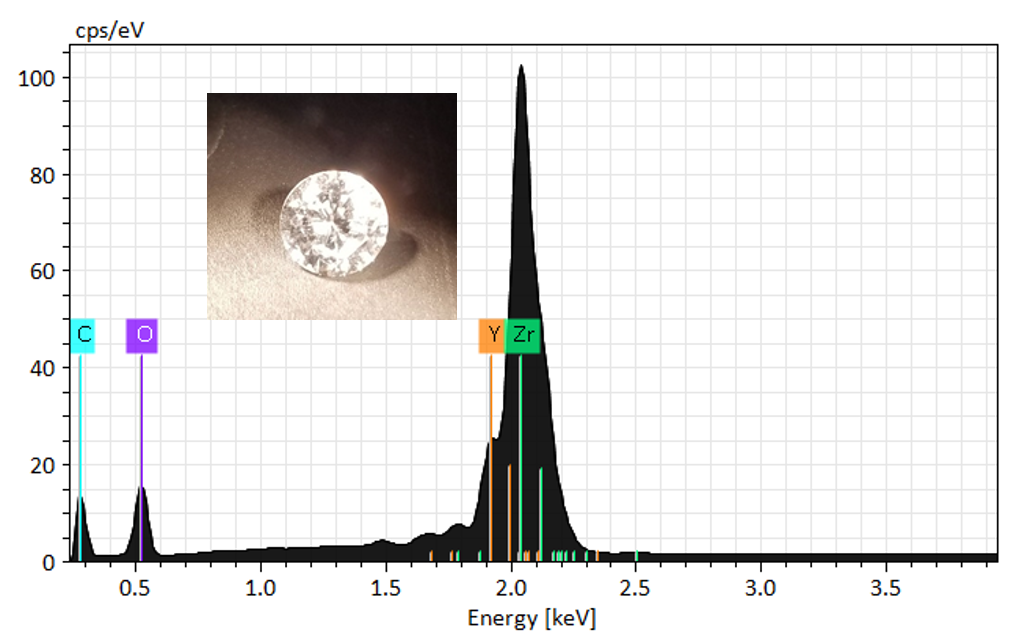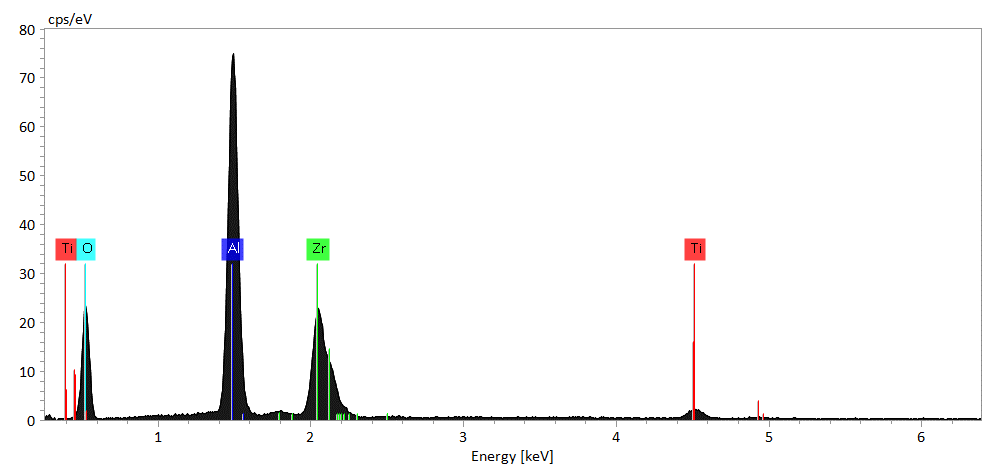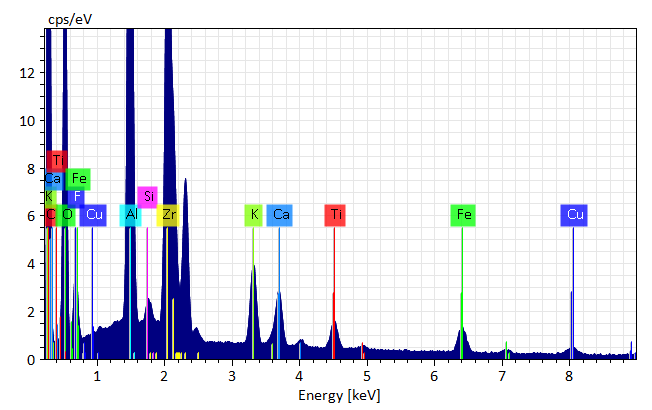Zirconium

Contributor: Ms. Amstutz class from Clay High School; Herman van Leeuwen from Flexovit; Todd Osborn from Materion; thanks to Rachel Larkin (Flexovit) for sharing her knowledge about the elemental composition of fillers, resin, abrasives, etc.
About the Display:
- Zirconium metal rods – donated by Todd Osborn from Materion; please also see Be
- Earrings – Cubic zirconia (ZrO2) is often used in jewelries as a diamond alternative due to its similar
 refractive index. Cubic zirconia is actually a metastable state and changes with
time to monoclinic zirconia. Therefore, yttria (yttrium oxide) is added to the cubic zirconia, locking the cubic zirconia structure in place
and preventing it from changing into the monoclinic form.
refractive index. Cubic zirconia is actually a metastable state and changes with
time to monoclinic zirconia. Therefore, yttria (yttrium oxide) is added to the cubic zirconia, locking the cubic zirconia structure in place
and preventing it from changing into the monoclinic form.
Elemental analysis performed at UToledo’s Instrumentation Center shows the existence of yttrium within the cubic zirconia crystal. https://www.youtube.com/watch?v=_Kvm4Uu_fuc
- Grinding Wheel and a sample of the abrasive material from https://www.flexovitabrasives.com/.
 Energy Dispersive Spectroscopy of the abrasive material was performed in the UToledo Instrumentation Center. It confirmed to be a mixture
of zirconium oxide (Mohs hardness: 6.5) and aluminum oxide (Mohs hardness: 9) with
some titanium oxide likely from the “white” alumina grain. The titanium oxide inclusions
make it white.
Energy Dispersive Spectroscopy of the abrasive material was performed in the UToledo Instrumentation Center. It confirmed to be a mixture
of zirconium oxide (Mohs hardness: 6.5) and aluminum oxide (Mohs hardness: 9) with
some titanium oxide likely from the “white” alumina grain. The titanium oxide inclusions
make it white.
 Analyses of the abrasive bonded to the grinding wheel. In addition to Al, Zr, Ti and O, we find iron (Fe) from Fe2O3 (Pirox), sodium (Na) and fluorine (F) from Cryolite (Na3AlF6 mineral), calcium (Ca) from limestone, potassium (K) can be found as an impurity
in one of the grains and silicon (Si) from the fiberglass used to reinforce the wheel.
Copper (Cu) is likely an impurity introduced during sample preparation for elemental
analysis.
Analyses of the abrasive bonded to the grinding wheel. In addition to Al, Zr, Ti and O, we find iron (Fe) from Fe2O3 (Pirox), sodium (Na) and fluorine (F) from Cryolite (Na3AlF6 mineral), calcium (Ca) from limestone, potassium (K) can be found as an impurity
in one of the grains and silicon (Si) from the fiberglass used to reinforce the wheel.
Copper (Cu) is likely an impurity introduced during sample preparation for elemental
analysis.
- Zirconia is a newer material for dental crowns. ZrO2 is stronger than porcelain and some metal alloys and 10 times stronger than natural teeth enamel.
- Scalpel are often zirconium oxide coated steel or even 100% zirconia.
Back to the Periodic Table
| |-Onward to the next element!> |
Symbol: Zr
Atomic Number: 40
Atomic Mass: 91.224 u
Electron Configuration: [Kr] 4d25s2
Year Discovered: 1789
Discovered By: Martin Heinrich Klaproth


